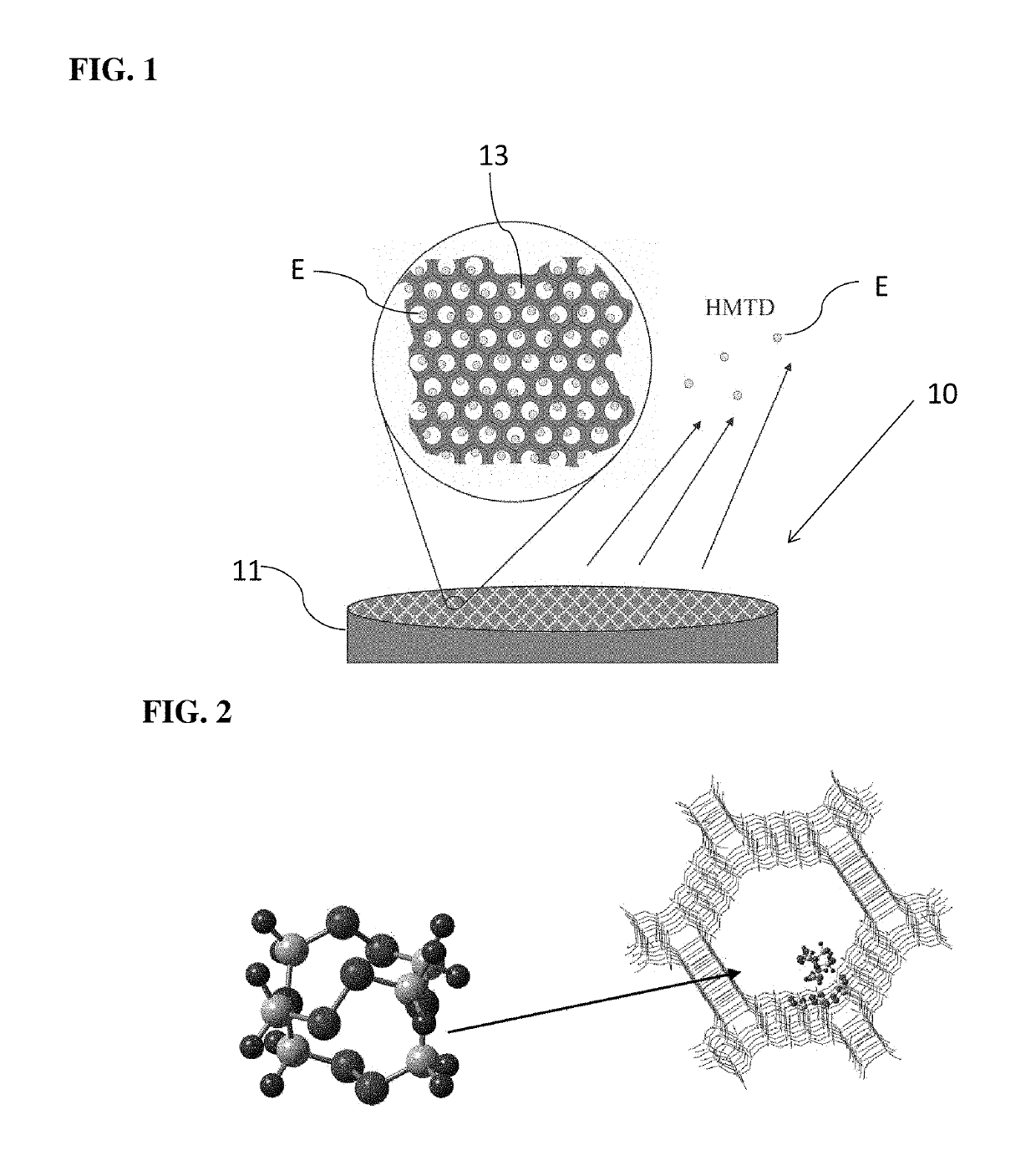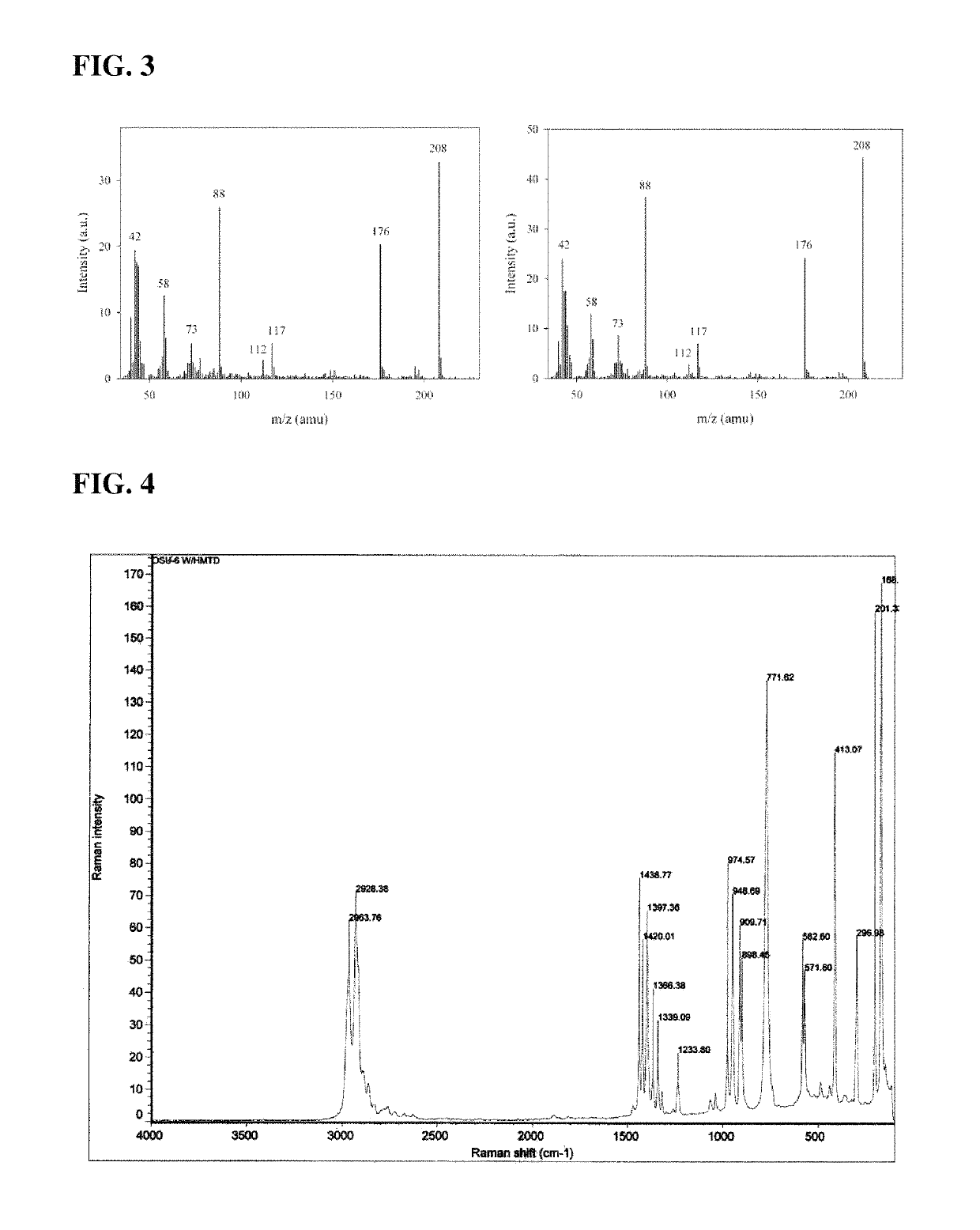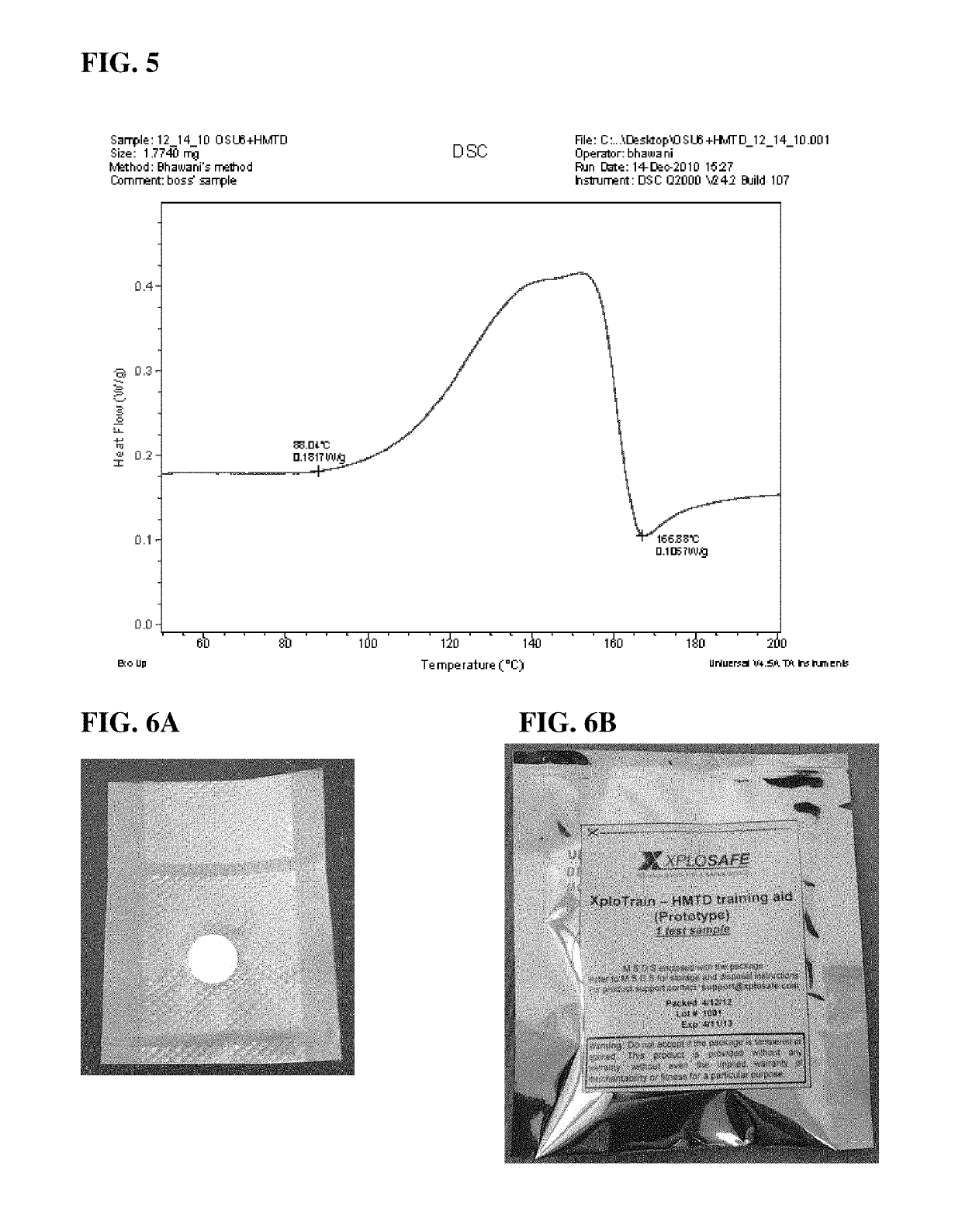Explosive-containing porous materials as non-detonable training aid
a training aid and porous material technology, applied in the field of systems, apparatuses, compositions, methods used for training canines, can solve the problems of high cost, increased cost, and increased difficulty in obtaining training aids, so as to reduce the cost of training and reduce the amount of explosive materials
- Summary
- Abstract
- Description
- Claims
- Application Information
AI Technical Summary
Benefits of technology
Problems solved by technology
Method used
Image
Examples
Embodiment Construction
[0017]A preferred embodiment of a non-detonable explosive vapor source or canine training aid made according to this invention makes use of extremely small quantities of the pure explosive material but is non-detonable and non-hazardous. The explosive material may be an explosive material selected from the following general classes of explosives:[0018]nitroaromatics—e.g., 2,4,6-trinitrotoluene (TNT), dinitrotoluene (DNT), 1,3,5-trinitrobenzene[0019]nitroamines—e.g., hexahydro-1,3,5-trinitro-1,3,5 triazine (research department explosive or RDX or cyclonite); octahydro-1,3,5,7-tetranitro-1,3,5,7 tetrazocine (high melting explosive or HMX), nitroguanidine, and tetryl;[0020]nitrate-based explosives—e.g., pentaerythritol tetranitrate (PETN), urea nitrate, ammonium nitrate; and[0021]peroxide-based explosives—e.g., hexamethylene triperoxide diamine (HMTD), triacetone triperoxide (TATP).
When in use, the canine training aid releases a continuous flux of explosive, simulating the pure explosi...
PUM
| Property | Measurement | Unit |
|---|---|---|
| diameter | aaaaa | aaaaa |
| diameter | aaaaa | aaaaa |
| size | aaaaa | aaaaa |
Abstract
Description
Claims
Application Information
 Login to View More
Login to View More - R&D
- Intellectual Property
- Life Sciences
- Materials
- Tech Scout
- Unparalleled Data Quality
- Higher Quality Content
- 60% Fewer Hallucinations
Browse by: Latest US Patents, China's latest patents, Technical Efficacy Thesaurus, Application Domain, Technology Topic, Popular Technical Reports.
© 2025 PatSnap. All rights reserved.Legal|Privacy policy|Modern Slavery Act Transparency Statement|Sitemap|About US| Contact US: help@patsnap.com



